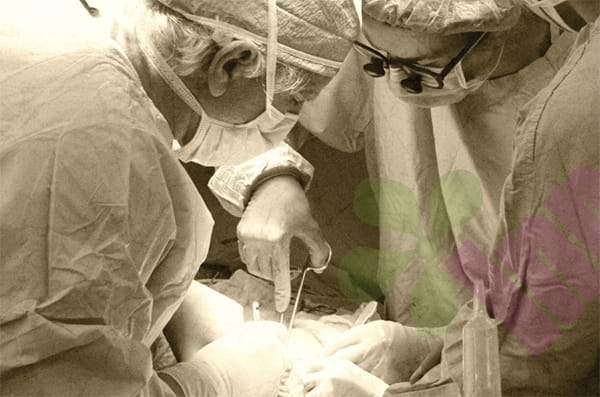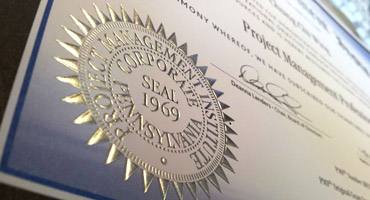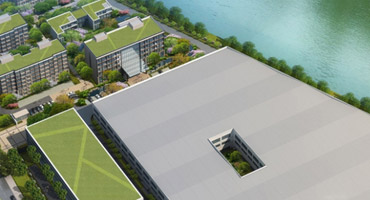Postoperative wounds should gradually heal, but sometimes wounds that have been sutured open again. This condition is medically known as wound dehiscence. It can manifest as broken sutures, separation of wound edges, or even exposure of underlying tissue. Understanding why this happens and how to address it is crucial to postoperative recovery.

What causes wound dehiscence?
Wound dehiscence is usually not caused by a single factor. Infection is the most common cause. Bacteria multiply in the wound and produce toxins that dissolve new tissue, making the tissue at the sutures fragile. Excessive activity or external traction is also critical, especially coughing, sneezing, or suddenly standing up after abdominal surgery, which will increase abdominal pressure and pull on the wound. Poor nutritional status, especially lack of protein, vitamin C, and zinc, will directly affect collagen synthesis, making the wound insufficient in strength. Certain diseases, such as poorly controlled diabetes and long-term use of hormones or immunosuppressants, can also significantly delay healing. Technical factors such as tight sutures, improper suture selection, or premature suture removal can also cause problems.
How to determine if a wound is dehiscent?
Signs of wound dehiscence are usually obvious. The most obvious sign is the appearance of a gap in a previously closed wound, which may be partial or full-thickness. Sutures may sometimes become loose or broken, and the wound edges may no longer fit snugly together. The dehiscence may produce drainage or bleeding, which may be purulent if infection persists. Patients often experience a sudden increase in pain that had previously subsided, or a tearing sensation. Severe dehiscence may expose subcutaneous fat or even muscle tissue, requiring immediate attention.
How to treat a wound after it has opened?
The treatment method depends on the extent of the tear. For small, shallow tears, you can try to use sterile butterfly tape to align the wound edges and observe the changes daily. However, it should be noted that this method is only suitable for very superficial tears, and the wound must be free of infection. For larger tears, especially those deep into the fat or muscle layer, you must not treat them on your own and seek medical attention immediately. The doctor will decide whether to re-suture or use other treatment methods based on the situation. If the wound is infected, it may be necessary to control the infection before considering secondary closure.
What role do skin closure dressings play in preventing wound dehiscence?
Choosing the right skin closure dressing is important for preventing wound dehiscence. In the early postoperative period, a dressing with moderate pressure function can be used to protect the wound and reduce local tension. For areas that are easily stretched, such as around joints, you can consider using a dressing with greater elasticity. Hydrocolloid dressings can keep the wound moderately moist, promote epithelialization, and provide a certain amount of mechanical protection. For wounds with more exudate, a foam dressing with good absorbency can prevent the accumulation of exudate and affect healing. Special areas such as the abdomen can be fixed with an abdominal band to reduce the pressure on the wound. When changing the dressing, pay special attention to being gentle and avoid tearing the wound.
How to prevent wound dehiscence?
Preventive measures should start before surgery. Try to improve your nutritional status before surgery, especially to ensure adequate protein intake. Control underlying diseases such as diabetes and hypertension. After surgery, strictly follow the doctor's orders to limit activities, especially to avoid sudden movements that increase abdominal pressure. Protect the wound with your hands when coughing or sneezing. Keep bowel movements open and use laxatives when necessary to avoid straining during bowel movements. Nutritional support should be continuous, and more protein and vitamins are needed after surgery to support healing. Follow the doctor's orders for regular follow-up and let the doctor evaluate the healing situation. Special suturing techniques or dressings can be used for high-risk patients to increase safety.
When is it necessary to seek medical attention immediately?
Seek immediate professional help if certain warning signs appear. A wound dehiscence exceeding 1 cm, especially if deeper tissue is visible. Excessive bleeding or purulent discharge from the dehiscence. Systemic symptoms such as fever and chills. Redness and warmth in the skin around the wound, and significantly increased pain. These conditions may indicate a serious infection or other complications requiring professional attention. People with diabetes, the elderly, or those with weakened immune systems should be especially vigilant, as wound problems in these individuals may progress more quickly.
While wound dehiscence is a cause for concern, it can often be resolved with prompt and appropriate care. The key lies in early detection, appropriate intervention, and strict prevention. Closely monitor wound changes after surgery, avoiding excessive tension but also not taking it lightly. Choosing the right skin-closing dressing, following your doctor's care recommendations, and maintaining good nutrition can significantly reduce the risk of dehiscence. Remember, when faced with uncertainty, it's always wise to consult your healthcare provider. For more information on Innomed® Wound Skin Closurerefer to the Previous Articles. If you have customized needs, you are welcome to contact us; you wholeheartedly. At longterm medical, we transform this data by innovating and developing products that make life easier for those who need loving care.
Editor: kiki Jia

 English
English عربى
عربى Español
Español русский
русский 中文简体
中文简体








